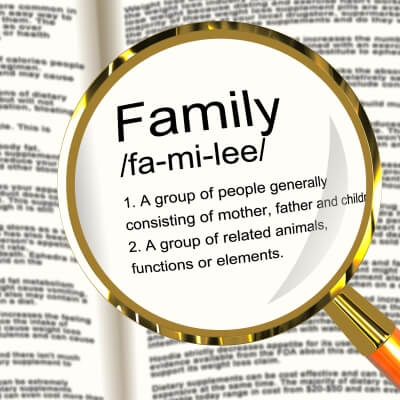
Professionals who work in family law have a tendency to overuse acronyms. They use them so frequently that sometimes they forget that people who do not work in family law are probably not familiar with these acronyms.
Below are a handful of the most commonly used family law acronyms and brief explanations of them.
-
OFP
-
An Order for Protection is an Order issued by the Court preventing one party from assaulting, threatening, contacting, or even going near the residence or place of employment of the petitioning party. The exact terms of the Order may vary on a case-by-case basis, and can even include provisions for temporary parenting time and child support.
OFPs are initiated by a Petition, which is usually reviewed ex parte, meaning that it is reviewed by a judge only on the basis of the evidence contained in the petitioner’s affidavit in support of the petition. The allegations in the affidavit need to establish two things: (1) that the parties are family or household members (generally, that they are related, in a romantic or sexual relationship, or lived together); and (2) that one party physically harmed or assaulted the petitioner, inflicted fear of imminent harm or assault, or made threats against the petitioner.—Minn. Stat. § 518B.01. An OFP may also be issued for other conduct, such as criminal sexual conduct or interfering with a 911 call.—Id. A petitioner may file an OFP on their own behalf and/or on behalf of a minor child.
If the reviewing judge believes that the petitioner has made sufficient allegations, the judge will issue an Ex Parte Order for Protection without hearing anything from the other party. The Ex Parte OFP will remain in place until it expires or until a hearing is held. In cases where the Ex Parte OFP prevents the respondent from having contact with one of his or her children, a hearing will be set automatically; otherwise, the responding party must request a hearing. At the hearing, the petitioner must prove that the allegations in his or her petition are true and that they fit the statutory definition of domestic abuse. If the petitioner is successful, the judge will issue a full OFP which will remain in place until it expires.
Violation of an OFP (whether issued ex parte or after a hearing) can, in some circumstances, be a felony.
-
HRO
-
A Harassment Restraining Order is similar to an OFP in that it restricts a person from harassing or contacting the petitioner. The fundamental difference between the two lies in the fact that no special relationship needs to be established between the parties for an HRO to issue. To get an HRO, the petitioner must allege that the other person: (1) committed a single act of physical or sexual assault; or (2) committed repeated intrusive or unwanted acts, words, or gestures toward the petitioner and that those acts, words, or gestures had a negative effect on the petitioner’s safety, security, or privacy. —Minn. Stat. § 609.748
As with an OFP, petitions for HROs are usually reviewed ex parte, and an Ex Parte Harassment Restraining Order will issue if the reviewing judge feels that the responding party. It is usually the responding party’s obligation to request a hearing if he or she wishes to challenge the petitioner’s allegations. At the hearing, the petitioner must prove that his or her allegations are true and that they fit the statutory definition of harassment in order for the court to issue a full HRO.
These explanations are only intended to give you a brief look at the meaning of these two similar but distinct issues. If you have further questions about OFPs, HROs, or other family law acronyms and issues, please call our office at 952-800-2025 or reach out via our online contact form to schedule your free consultation. We look forward to hearing from you.



